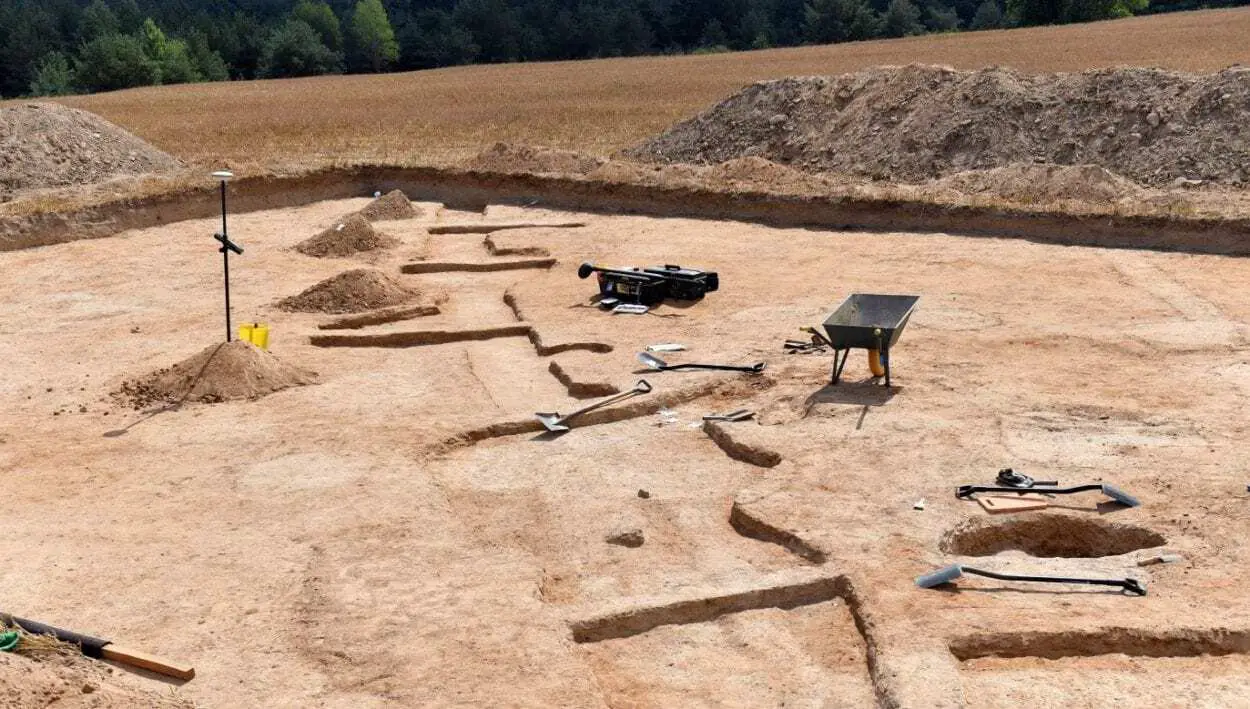Archaeologists excavating near a Neolithic Roundel, previously discovered in 2015 have now discovered the remains of an ancient settlement nearby.
The Roundel, located in Nowe Objezierze near Cedynia, north-western Poland has been extensively studied since 2017, consisting of four circular ditches, three palisades, and a diameter of 110 metres.
Roundels had a special meaning for the communities that built them – they were places of worship tied to the celestial movements of the planets and were also a place of gathering for Neolithic communities.
Similar monuments in terms of function, and to some extent form, were built independently in different epochs and parts of Europe (the most famous being Stonehenge in England).
The settlement was discovered 250 metres away from the roundel using a drone to conduct an aerial survey. So far, traces of one house with a structure very characteristic of that time has been studied in the settlement – consisting of a foundation ditch dug on a trapezoidal plan.
Archaeologists have also excavated a burial which they date from a time when the roundel was in use, in addition to fragments of clay vessels, items made of flint and stone, including stone axes and grinding stones.
Researchers hope the discovery will give further insight into the social and settlement context for the roundel, as well as how the builders lived their lives in a wider setting.
Header Image Credit : Marcin Bielecki







